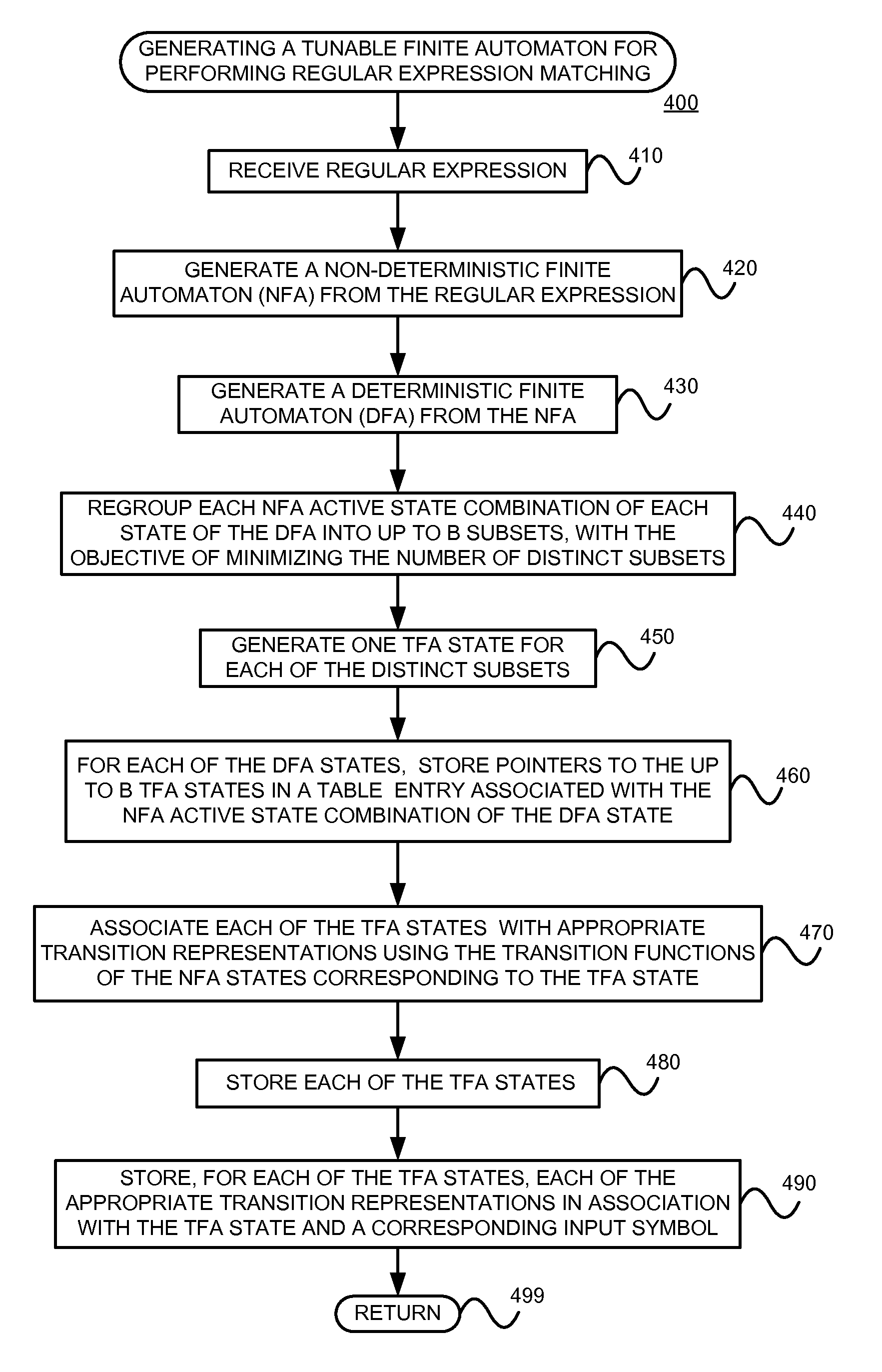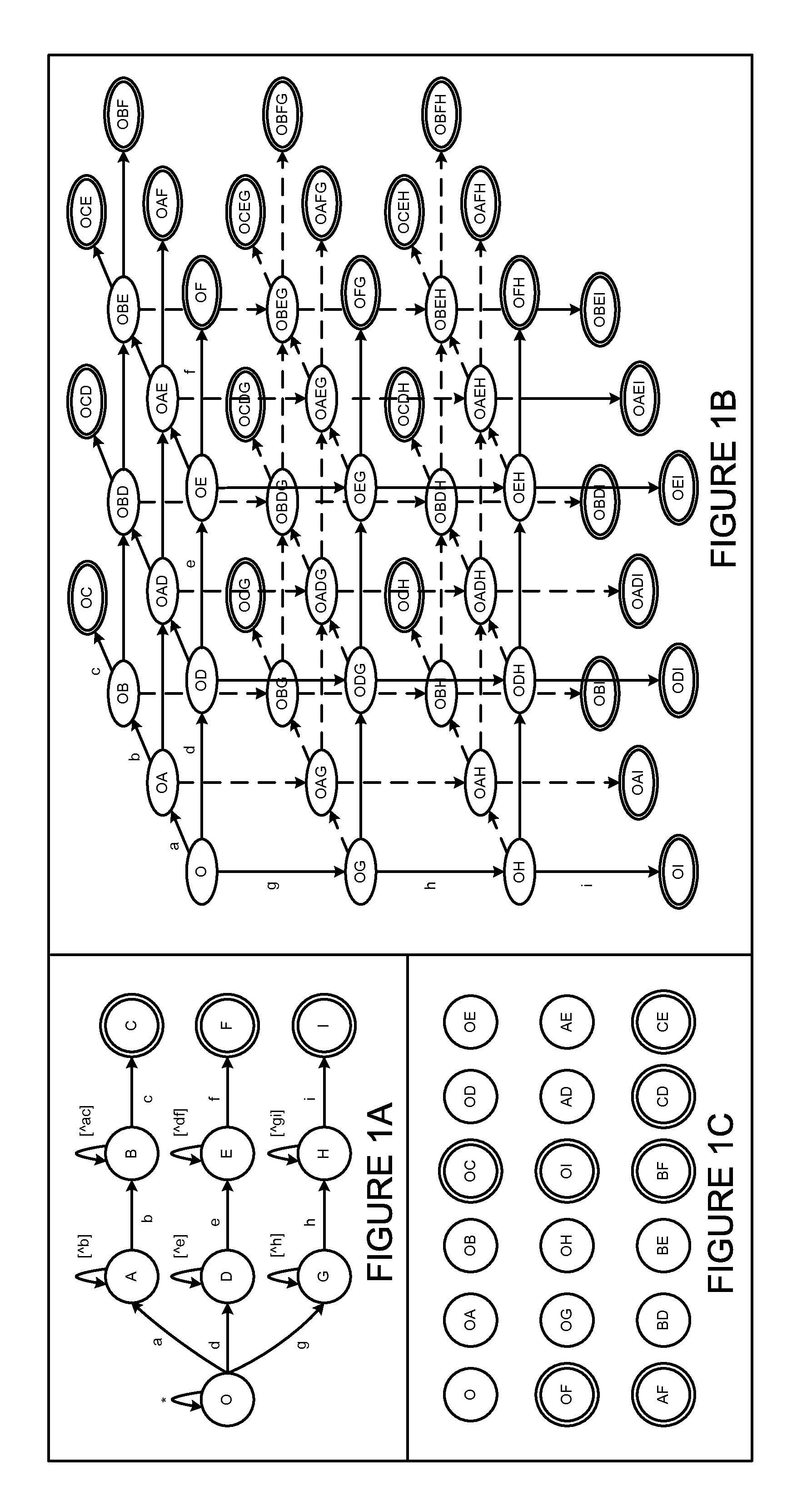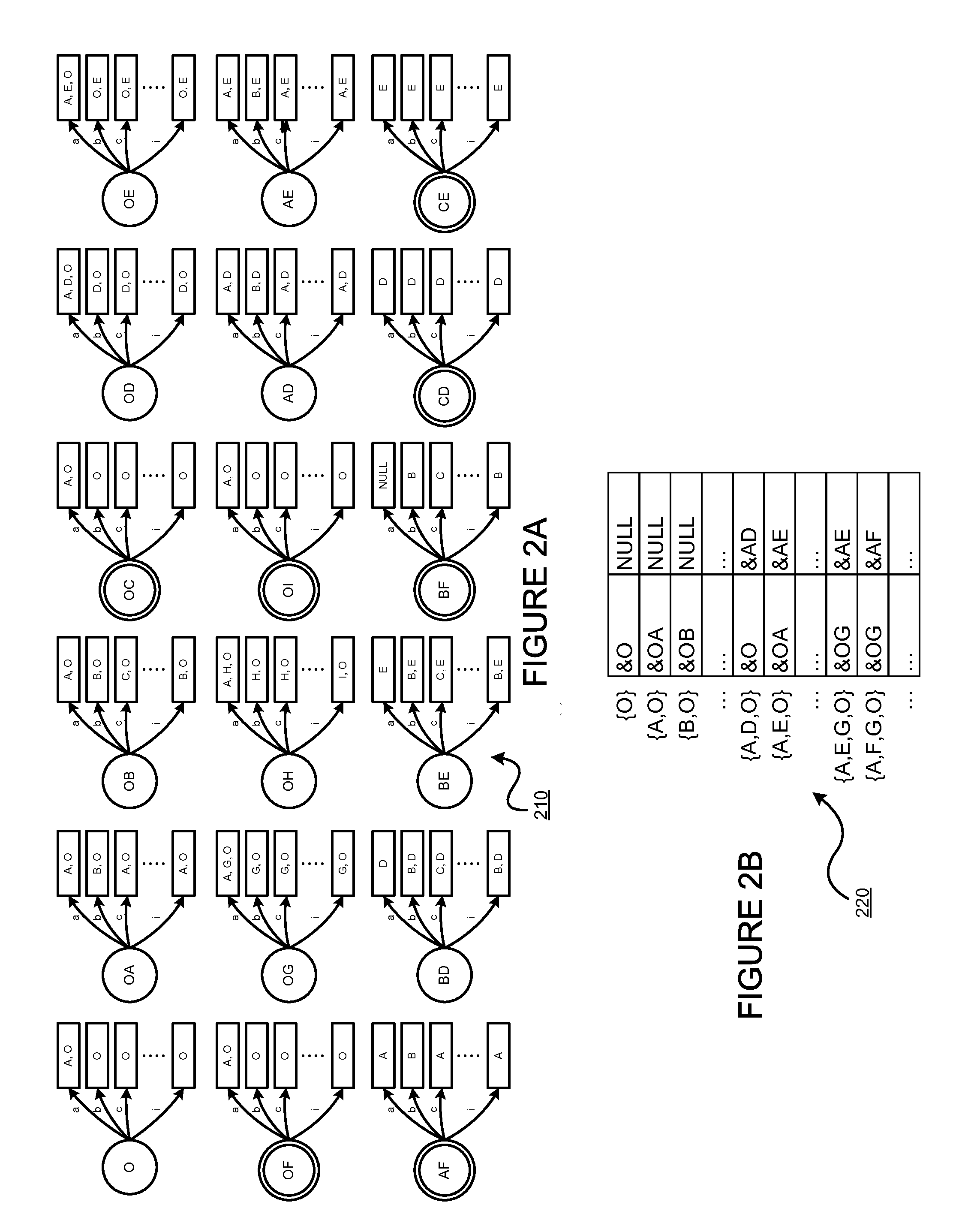Using a tunable finite automaton for regular expression matching
a finite automaton and regular expression technology, applied in the field of pattern matching using regular expression matching, can solve the problems of dfa's severe state explosion problem, significant computational and storage challenges of regular expression matching, and the requirement of deterministic memory bandwidth, so as to minimize the total number of distinct subsets
- Summary
- Abstract
- Description
- Claims
- Application Information
AI Technical Summary
Benefits of technology
Problems solved by technology
Method used
Image
Examples
Embodiment Construction
[0032]A new automaton representation for regular expression matching, called a Tunable Finite Automaton (“TFA”), is described. It resolves the DFAs' state explosion problem and NFAs' unpredictable performance problem. A few TFA states are used to remember the matching status traditionally tracked by a single DFA state such that the number of TFA states required to represent the information stored on the counterpart DFA is much smaller than that of DFA states. Unlike an NFA, a TFA has the number of concurrent active states strictly bounded by a bound factor b, which is a parameter that can be tuned during the construction of the TFA according to needs for speed and / or storage.
[0033]The present invention may involve novel methods, apparatus, message formats, and / or data structures to generate and / or use TFAs, to regroup NFA active state combinations to minimize the total number of distinct subsets, and / or to represent NFA states efficiently, in a way permits efficient union operations...
PUM
 Login to View More
Login to View More Abstract
Description
Claims
Application Information
 Login to View More
Login to View More - R&D
- Intellectual Property
- Life Sciences
- Materials
- Tech Scout
- Unparalleled Data Quality
- Higher Quality Content
- 60% Fewer Hallucinations
Browse by: Latest US Patents, China's latest patents, Technical Efficacy Thesaurus, Application Domain, Technology Topic, Popular Technical Reports.
© 2025 PatSnap. All rights reserved.Legal|Privacy policy|Modern Slavery Act Transparency Statement|Sitemap|About US| Contact US: help@patsnap.com



